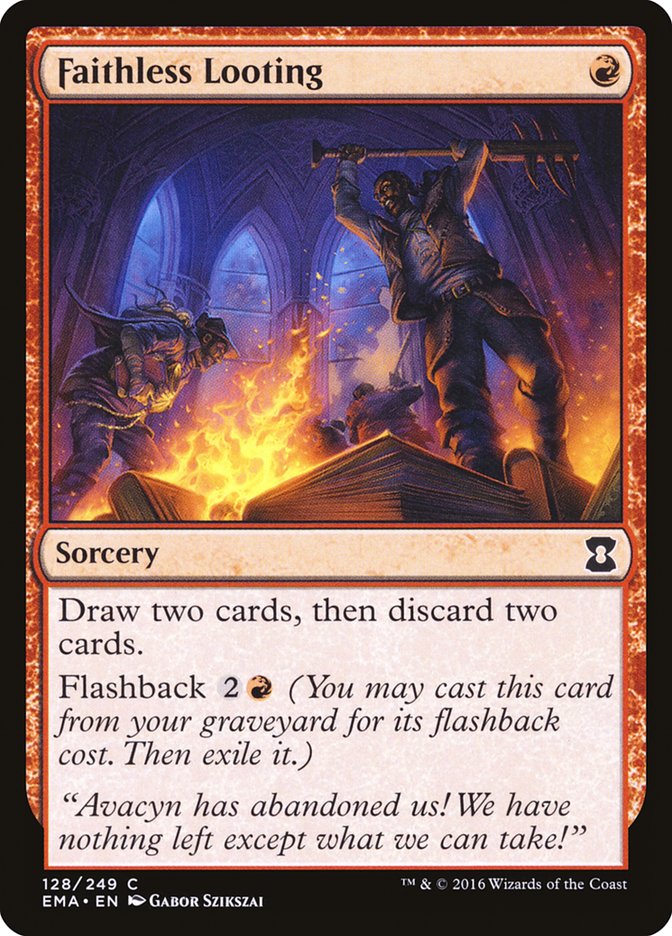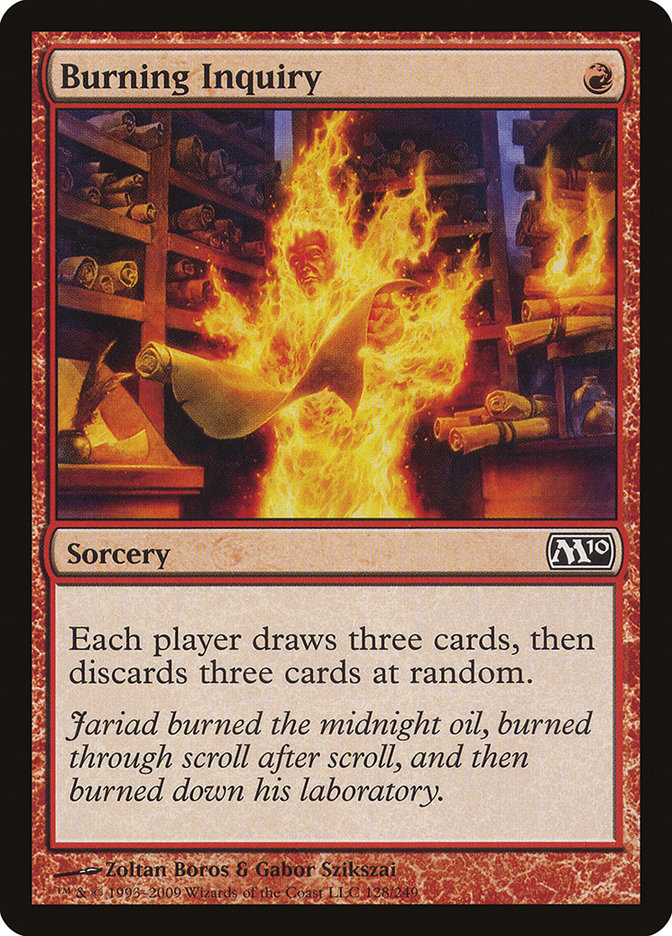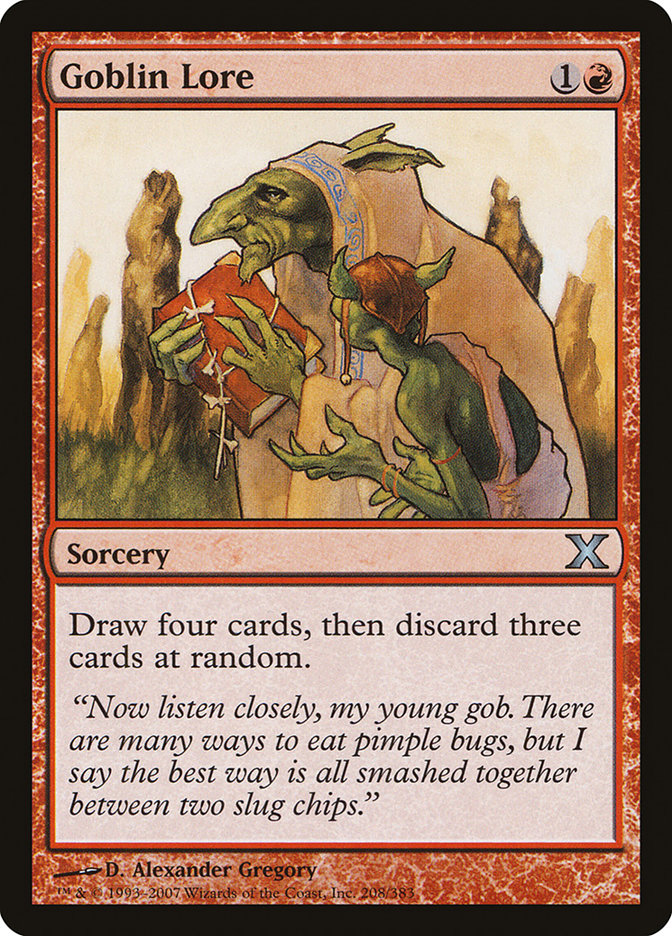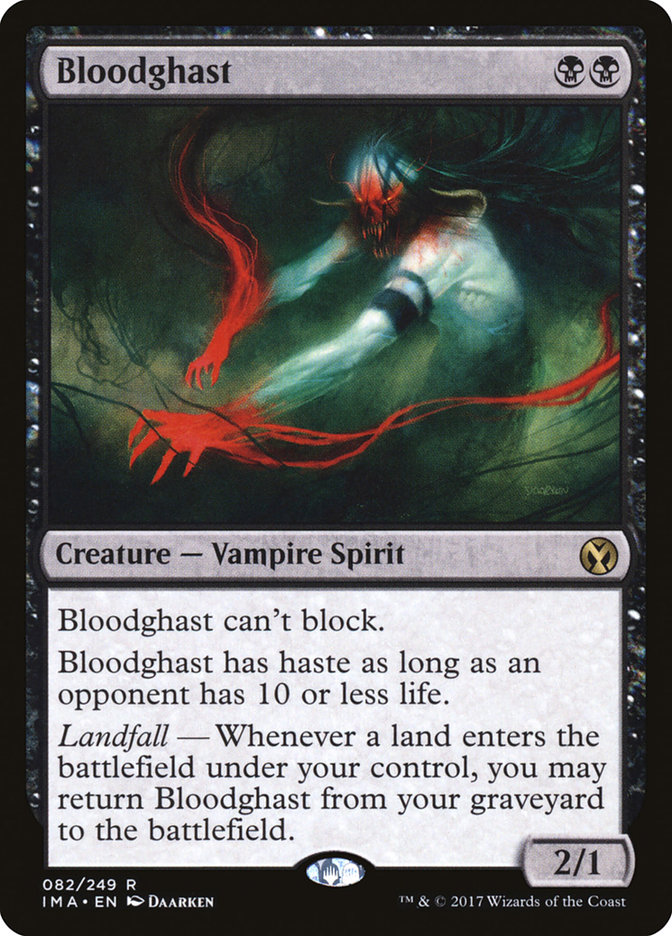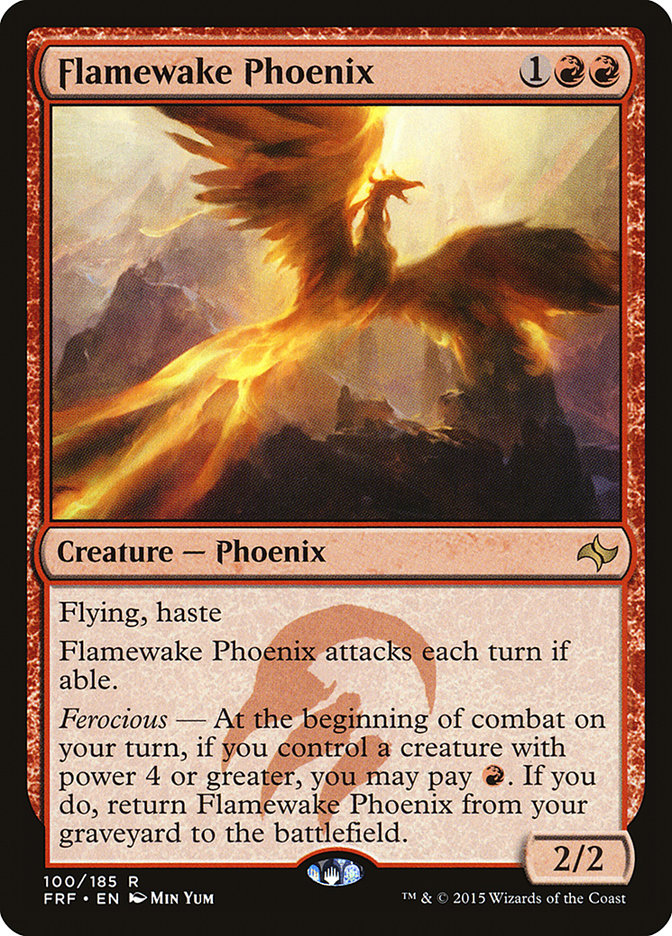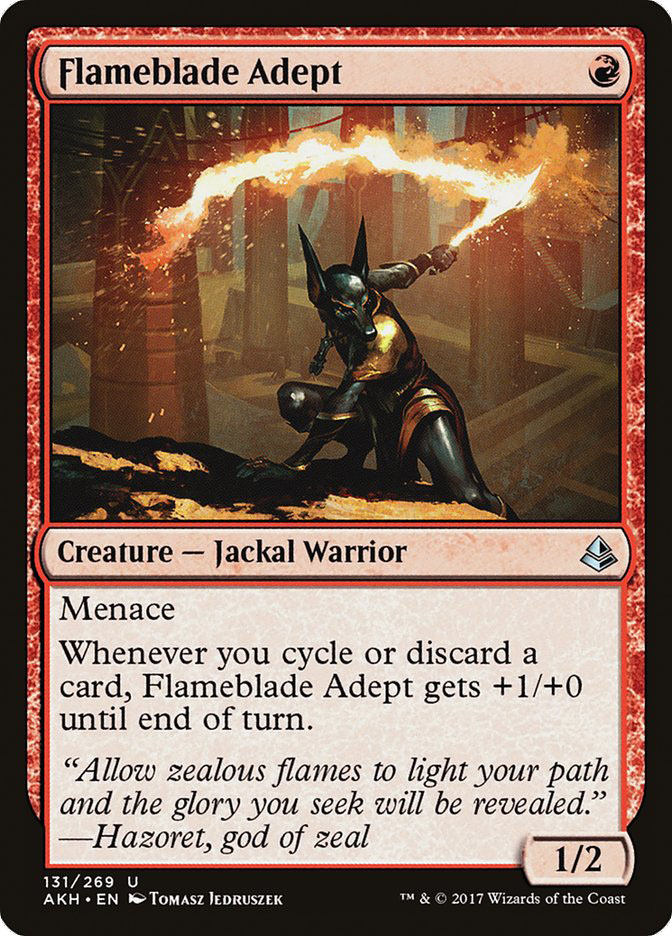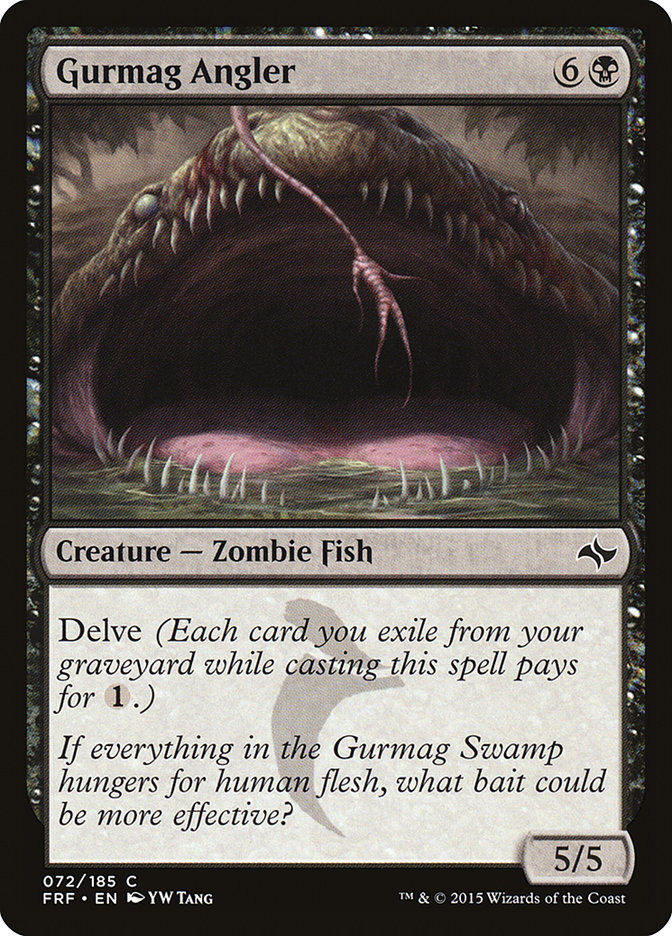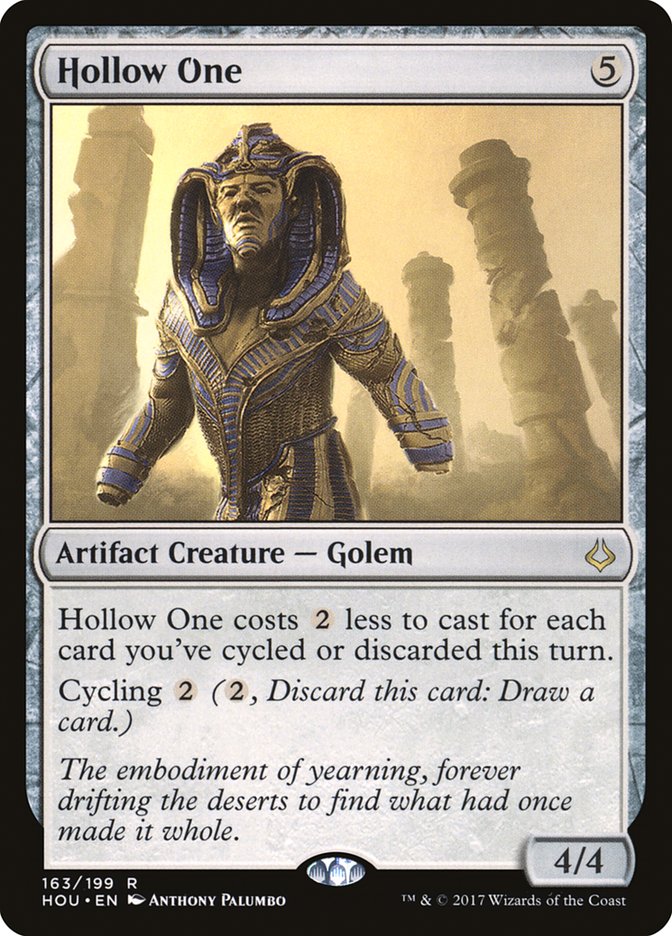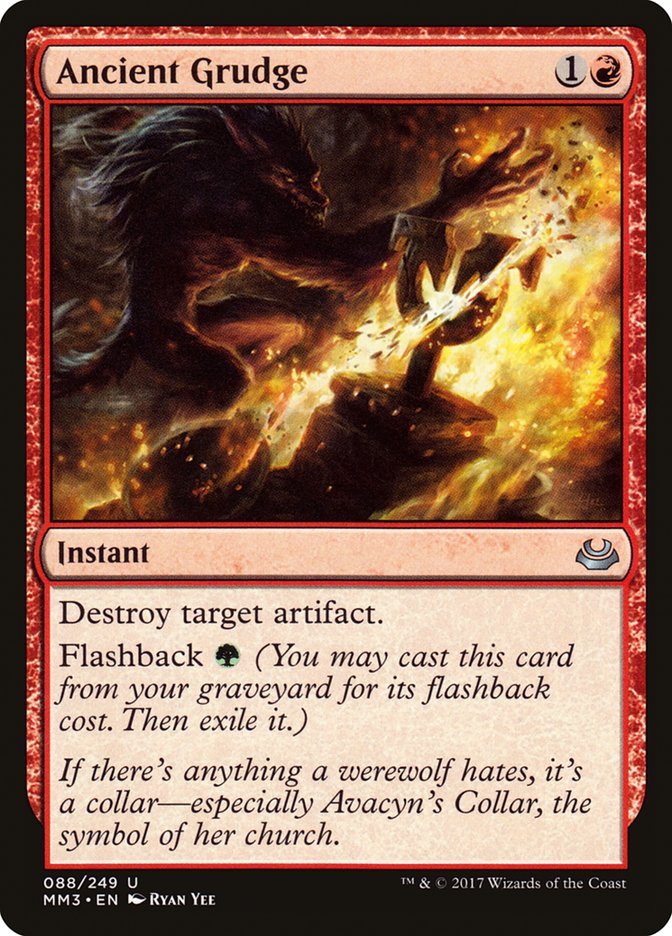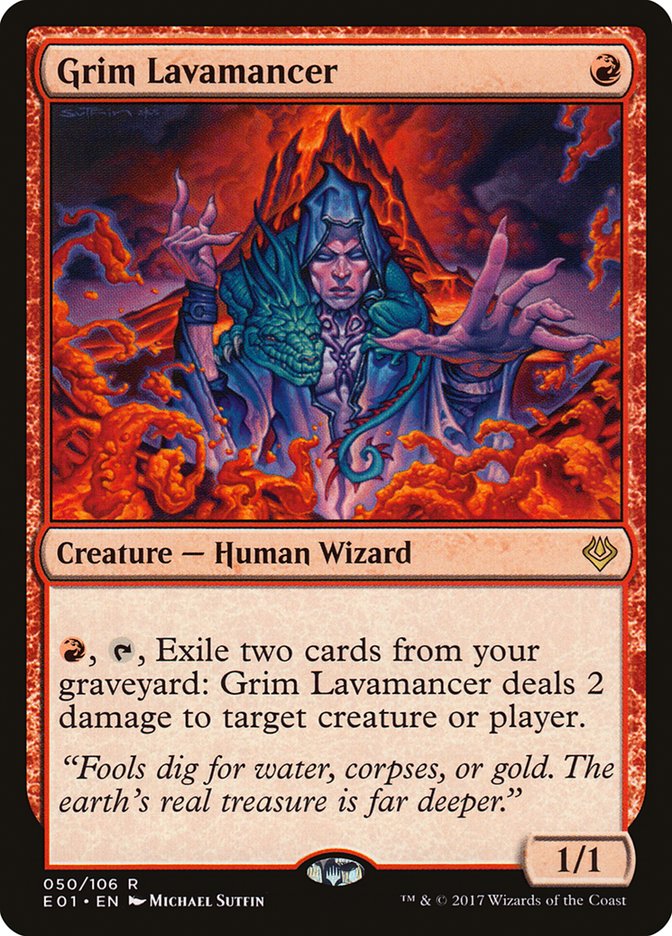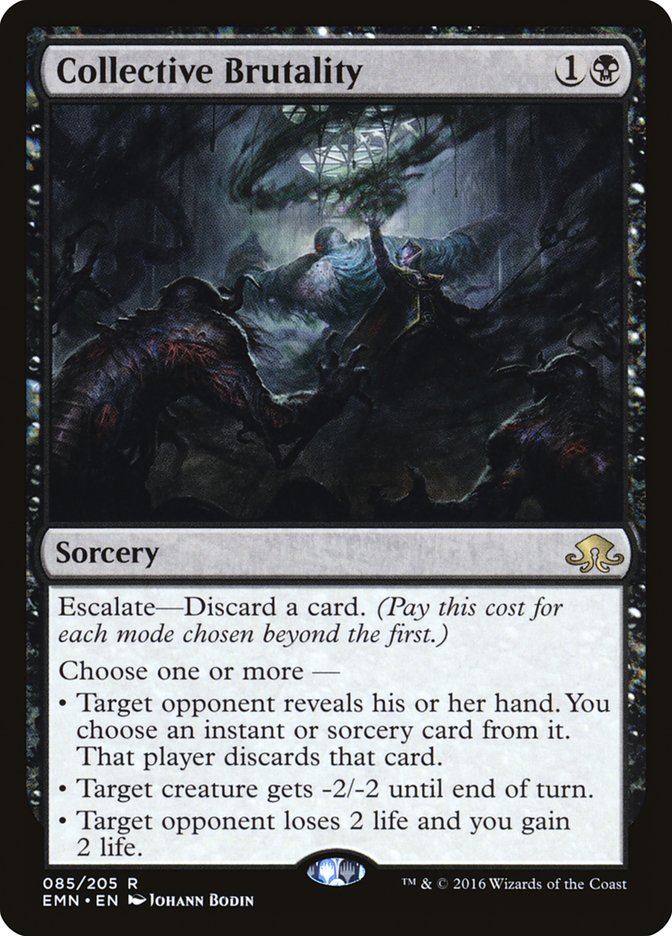With the unbanning of both Jace, the Mind Sculptor and Bloodbraid Elf, Modern has had a bit of a shake-up. Unfortunately for blue mages, Jace, the Mind Sculptor hasn’t been putting up the numbers most of us expected. Instead, Bloodbraid Elf has revitalized Jund, putting it back on the top of the food chain.
Is the deck beatable? Sure, even with the four-mana Elf making its grand return. Tron and other big mana decks continue to be a problem for Jund, as well as a slew of other strategies that blank most of its removal or, at the very least, have creatures that don’t necessarily fold to their cheap answers.
Hollow One is one of those decks. And, on top of having creatures that survive Lightning Bolt, Fatal Push, and Abrupt Decay, it contains enough synergy to make Merfolk blush.
Let’s get to the deck.
Creatures (24)
Lands (18)
Spells (18)
Sideboard

For those of you who’ve missed seeing this deck in action, it abuses the synergy between Hollow One and three different “looting” spells. Both Burning Inquiry and Goblin Lore hit the sweet spot of discarding three cards, which in turn makes Hollow One free to cast. On top of Hollow One, most of your other threats benefit from discarding cards in some way or another. Faithless Looting can combine with Street Wraith to unlock fully free Hollow Ones, but even a one-mana 4/4 isn’t a bad deal. And if you’re discarding excess lands or graveyard-based creatures, the value gained from a single Faithless Looting can make all the difference.
I wanted to talk about this card specifically because it is one of the more distinctive cards in the deck. In a lot of ways, Burning Inquiry can throw your opponent’s strategy on its head in a hurry. It can randomly hit their only answer to your big threat. It can take away their win condition. It can even make them discard all of their lands. While it won’t always disrupt your opponent, the fact that you can outright win a game by casting it on the first turn is mind-boggling.
But Burning Inquiry also allows you to hit more of your nuttier draws. A first-turn Burning Inquiry gives you access to casting Hollow One, singly and in multiples. And while casting multiple copies of Hollow One on the first turn isn’t always going to happen, the games where you do are going to be over quickly.
The random discard from both Burning Inquiry and Goblin Lore can make for wildly different gameplay experiences, but using them wisely is one of the bigger tests of the deck. Sometimes it is important to wait until you’ve already drawn a Hollow One. At other times, you just need to cast it to replace some of your excess lands with a spell or two.
And while it won’t be a guarantee, and sometimes you’re left hard-casting Bloodghast or Flamewake Phoenix, the truth is that that’s why they’re in your deck. You can actually cast them easily, and they hit pretty hard on their own.
Bloodghast and Flamewake Phoenix are easier-to-trigger replacements for Vengevine, which was in the original build of the deck. But consistency in your payoff cards is more important for a deck like this, and the change is easy to make once you’ve played the deck a few times. While neither card will win the game outright, they both have added value over time. Your other big threats will be primary targets for stuff like Path to Exile, making Bloodghast and Flamewake Phoenix survive for the second or third time around.
One thing I love about this deck is how resilient it can be against Supreme Verdict. While your bigger threats will die a miserable death, your backup creatures will be there to pull out the victory. If you expect an opponent will cast a sweeper effect on the fourth turn, it is often vital to hold cards in hand. Whether it’s a land for Bloodghast or big creature for Flamewake Phoenix, holding cards is usually better than just playing out everything in your hand. On top of that, holding excess lands also makes it so you have more juicy discards later in the game, turning lands into castable spells.
Aside from the creatures that you enjoy discarding, the rest of your threats aren’t all that bad either. Flameblade Adept is surprisingly powerful, pushing upwards of ten damage per game if left unhindered, and the built-in evasion with menace is quite strong.
In older versions with Vengevine, you’d often want to hold onto your cheap threats so that you could cast them in the same turn to trigger Vengevine. But without the drawback of needing to hold onto your cheap creatures, Flameblade Adept gets to shine. Any draw that begins with a Flameblade Adept is going to be much better than one that doesn’t. Assuming it doesn’t die, the damage you can pile up is terrifying considering you’re just casting the spells your deck wants to cast. The similarities between it in Modern and Delver of Secrets in Legacy are eerie.
Gurmag Angler is a big beatstick that can steal games out of nowhere. A 5/5 for one mana is a huge swing when you’re “going off” with all your looting spells. We all know that Gurmag Angler is a great threat in Modern (and even Legacy), but this deck fills the graveyard so quickly that you might be surprised just how soon you could put one onto the battlefield.
U/B/X decks running Thought Scour and Gurmag Angler can often put it onto the battlefield on the second turn. Well, imagine having two different versions of Thought Scour. Plus, our two-mana loot spell with Goblin Lore can make casting three major threats on the third turn a strong possibility.
What often happens when playing this deck against a fair strategy (like Jund or Jeskai) is that they’re able to deal with your bigger threats after they’ve chunked in for a few points of damage. After that, you’re occasionally left with Bloodghast and Flamewake Phoenix mopping up the rest. This isn’t necessarily a bad thing, because these cards are in our deck for that very reason.
Resilient threats that we don’t mind discarding give us longevity. Faithless Looting and our other loot spells make it so that we don’t flood out all that often. But even when we do, we can put that extra mana to good use. A fourth turn Faithless Looting Flashback followed by a Hollow One or Gurmag Angler is more than fine in most cases.
As for playing against unfair decks in Modern, there are few aggressive strategies that can compete with the pure speed of B/R Hollow One. In a lot of ways, B/R Hollow One is a lot like Death’s Shadow, but without all the loose change. We aren’t trying to pick apart their hand or kill all of their creatures. Instead, we’re just going to play threat after threat and hope it’s good enough.
Spoiler alert: It usually is.
When you’re playing against an unfair deck like Storm, you have enough interaction to keep them honest (Lightning Bolt their creature, Collective Brutality their best spell) while also having an insanely fast clock. And that’s the best way to beat an unfair strategy: just enough interaction to slow them down while putting a fast clock in their face. If you start closing the door quickly, they’ll struggle to find the win in that short period of time.
This is the reason to play the deck. Without Hollow One, this deck could theoretically exist, but it would be much less explosive and a lot less fun.
Casting free creatures has been one of the coolest parts of Magic throughout its history. I remember casting Myr Enforcer for free back during Mirrodin Block Standard, and it was chaos. Beautiful, degenerate chaos. Now we can do something similar, and in a much faster time frame.
While the original version of this deck tried to abuse the free nature of Hollow One to get back Vengevine, this version involves a lot fewer bells and whistles. While the power level and explosive turns are a bit worse, I think this deck more than makes up for it in consistency, which was a big factor in me putting down the deck in the first place.
General Sideboarding Advice
This deck can sideboard in a variety of ways. Most opponents will have some amount of graveyard interaction, which could slow down your recurring threats like Bloodghast and Flamewake Phoenix or just make your Gurmag Angler nearly uncastable.
In those scenarios, it is important to figure out just what hate cards your opponent will be bringing to the table. Stuff like Rest in Peace or Relic of Progenitus can be a nightmare, but Grafdigger’s Cage and Surgical Extraction are easy to play around. Thanks to Hollow One not using the graveyard at all and Gurmag Angler just using the excess cards in your graveyard as mana, you can still generate quite a bit of pressure in the face of graveyard hate.
Most Modern decks get a bit worse after sideboarding because the majority of them are linear. You are also a linear strategy, but your threats aren’t all dead on arrival if your opponent casts an annoying anti-graveyard spell. Instead of having a bunch of ways to kill Rest in Peace and such, we’re focusing more on cards that will slow our opponents down enough so our impaired aggression can still take the game. Assuming both players draw their hate cards, I want to make sure that we come out on top.
Running four copies of this card seems like a no-brainer right now. After Lantern Control won the Pro Tour, the deck started showing up in much greater numbers. It is also a horrible matchup. But adding a few more ways to kill Ensnaring Bridge can change the matchup dramatically. And if those ways to kill Ensnaring Bridge can still be cast from the graveyard, then they can’t even stop it by milling it off the top of your library once they’ve established “the lock.”
But Ancient Grudge has many other uses. Affinity is still a deck, and we might need a little help containing annoyances like Cranial Plating on a flying creature. On top of that, a lot of different Modern decks have a few artifacts here and there that can be important to their strategy. For the most part, Ancient Grudge is a card that I’m fine having more than a few copies of “just in case.”
Blood Moon gives us a way to interact with decks that might pose a significant problem if they’re able to overcome your early aggression. Decks like Jeskai, Jund, Tron, or Scapeshift can all be problematic at times. If your draw doesn’t really pan out, they can also be faster than you. Blood Moon has so many uses in so many matchups that it seems foolish not to include it in a deck that can easily function on mostly red mana.
While Jund decks will likely expect Blood Moon from your deck, you can still shut them off from casting more than one spell a turn quite easily. Further, cutting off their Raging Ravines is a great way to win the long game. Games with Jund often come down to both players playing off the tops of their decks, and their advantage in that scenario is almost always built on using Raging Ravine when they have the battlefield clear. The same can be said of Celestial Colonnade from Jeskai.
While I usually hate Blood Moon as an answer, the raw power of such a hoser cannot be ignored. Yes, your opponent might have an answer to it as splash damage from trying to kill Hollow One, but your deck also doesn’t need Blood Moon to win the game. You can just kill them with early aggressive draws. And in those scenarios, you’re heavily favored because your deck isn’t trying to be reactive. You’re just trying to kill your opponent quickly, and you have Blood Moon to mess with them if things start to go wrong.
Fatal Push is just additional removal against decks that might be a little faster than us or contain must-kill threats. Devoted Druid is a problem, and we need ways to kill it. Fatal Push gets the nod over something like Forked Bolt because it can occasionally squash a Knight of the Reliquary in a pinch. In addition, Death’s Shadow can be a nightmare if you fall behind.
Liliana of the Veil is a twofold sideboard card, acting as a disruptive element to combo decks while still putting pressure on creatures. Liliana of the Veil is one of the best spells you can cast against a Death’s Shadow opponent and one of the better disruptive elements against something like Storm or Control. While Liliana of the Veil does get outclassed by Jace, the Mind Sculptor, your threats are more than enough to put Jace in his place, and with both Bloodghast and Flamewake Phoenix having haste, you can occasionally kill Jace, the Mind Sculptor even if your opponent swept your battlefield the turn prior.
Liliana of the Veil is also dangerously close to having a place in the maindeck. In fact, in the versions of Death’s Shadow Vengevine I played a while back, I had two copies in the maindeck. After a few matches, I discovered that it was a little too slow and didn’t always have the effect on the game that I needed it to. As a result, I’m more than happy having a few in the sideboard for matchups where your opponent won’t be able to pressure it easily.
Some decks just can’t beat Grim Lavamancer. I know that might sound hyperbolic, but Grim Lavamancer could easily start gaining you one card per turn if left unchecked. Sure, you need to keep your graveyard stocked and spend a red mana each time, but that’s a small price to pay to win the game on the spot. Most linear creature-based decks revolve around utilizing cheap creatures to get under the opponent, and most of those creatures die to the two damage of Grim Lavamancer.
Think about it. If you’re playing Affinity, Elves, Merfolk, Devoted Druid, and the list goes on, how many total answers to Grim Lavamancer are going to be in your deck? Four at the most? And how awful would it be if Path to Exile is that removal spell? You’re essentially giving your opponent a Rampant Growth and losing half or more of one of your early turns to make sure you don’t lose on the spot.
Cards to Cut
This card is mediocre at best in most matchups. Don’t be afraid to cut all four if your opponent has few or zero creatures you actually care about (that die to Lightning Bolt, of course).
See Lightning Bolt. This card is inefficient but has some upside in weird matchups. Don’t be afraid to cut your copies for hard-hitting sideboard cards.
This is an easy cut against decks with Fatal Push and Lightning Bolt. It is the only creature in your deck that dies to those spells where you can’t just get it back the next turn. Flameblade Adept shines against combo decks, giving you an insanely fast clock for one mana. Against fair decks with a lot of burn-based removal, I wouldn’t bother keeping it in.
Aside from these three cards, you can also cut Street Wraith against Burn. You can trim on stuff like Gurmag Angler, Flamewake Phoenix, and Bloodghast if you expect your opponent to have a bunch of stuff like Rest in Peace. Just remember that they won’t always draw those cards, and these creatures can be valuable against decks like Jeskai if they just don’t draw their Rest in Peace.
***
My gut tells me that this deck is great, but not for the faint of heart. Randomly discarding can make or break a draw, and you will occasionally lose that coinflip. The upside is that most of your random discards aren’t all that bad. And more often than not, you’ll draw into more ways to loot away the bad cards that you unfortunately had to keep the first go around.
If you like explosive decks with a lot of synergy, this deck should be right up your alley. I’m a big fan, so much so that I almost booked a last-minute flight to Grand Prix Phoenix last weekend, but the flight was just a little too pricey for my tastes.
Is this the best version of the deck? Probably not. We’ve only scratched the archetype’s surface. My first few passes considered Burning Inquiry and Goblin Lore, but I was never able to pull the trigger. But now that someone has, and even punched a Top 8 ticket at Pro Tour Rivals of Ixalan, I’m happy to keep exploring this archetype. What other graveyard shenanigans can we get into? Is there room to try out Squee, Goblin Nabob and Zombie Infestation? Could we get a Griselbrand and Goryo’s Vengeance package up in there? What about a combo from the sideboard?
The possibilities are countless because Modern is a gigantic format, and it is no wonder that we see new archetypes popping up all the time. I’m loving Modern right now, I’m loving B/R Hollow One right now, and I’m loving Magic right now. Let’s have some fun and spin the wheel!


